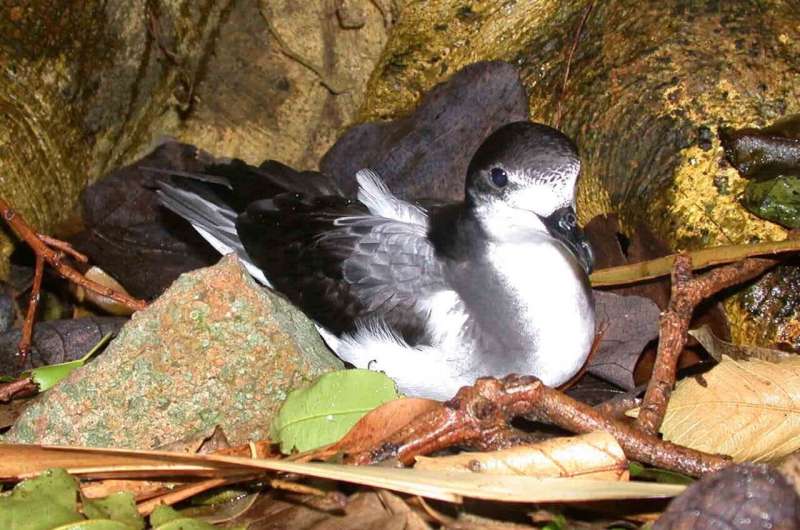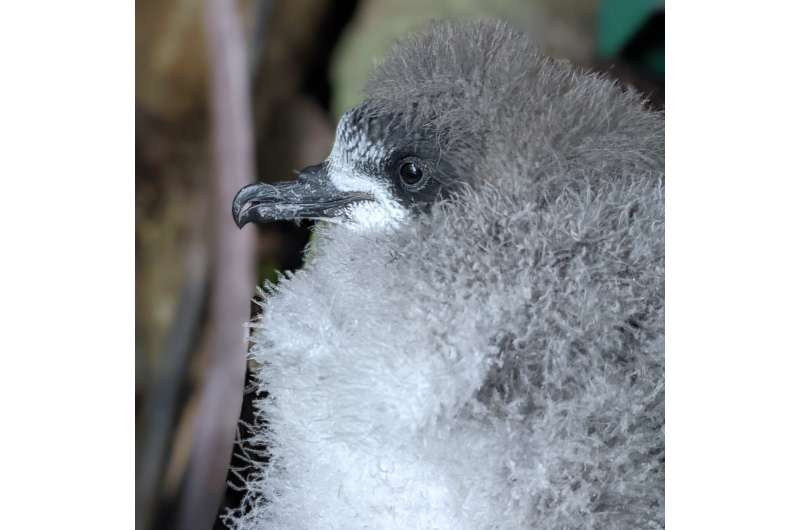This article has been reviewed according to Science X's editorial process and policies. Editors have highlighted the following attributes while ensuring the content's credibility:
fact-checked
peer-reviewed publication
trusted source
proofread
Age matters: New age-ID tool set to revolutionize threatened seabird conservation

Scientists have developed a rapid and accurate way to estimate the age of a seabird, which could revolutionize the way threatened seabird populations are assessed—and boost conservation efforts.
"Some seabirds can live for over 70 years, but measuring demographic change isn't easy when juveniles look the same as geriatrics," said seabird ecologist, Dr. Lauren Roman, who is a research associate with the University of Tasmania's Institute for Marine and Antarctic Studies (IMAS).
"A vital aspect of ecology and conservation is understanding the age structure of populations under threat, like albatrosses, petrels and other long-lived creatures," she said.
"But until now, the best available method of knowing a bird's age has been to fit it with a leg-ring as a chick, and hopefully recapture it later—a method that is labor-intensive, expensive and can result in gaps in data records."
Now scientists have adapted a genomic tool, referred to as the "epigenetic clock," especially for seabird conservation. The study is published in the journal Molecular Ecology Resources.
To achieve this, the team has mapped changes in the DNA of Gould's petrels (Pterodroma leucoptera) as they age. This builds on earlier work to develop the technique for other species by CSIRO, Australia's national science agency, through its Environomics Future Science Platform.
"An epigenetic clock is a tool that measures changes in an animal's DNA as it ages, and by analyzing these changes we can estimate an individual's biological age," said co-author and CSIRO Research Technician, Chloe Anderson.

"Our research team adapted this tool to create the first epigenetic clock for birds using a rapid and affordable method, specifically Gould's Petrel—and it can be applied across other long-lived species."
The technique involves taking a small blood sample from a seabird, which is analyzed for these DNA changes.
Those changes are compared against a reference group of individuals that have been fitted with leg rings.
Dr. Roman said the genomics tool can be applied to establish baselines for Australia's major seabird breeding populations, to evaluate the magnitude of differing threats, and to understand the demographic outcomes of conservation actions.
"This technique will give wildlife managers a tool to detect emerging risks to seabird populations, which can mask declines in species with long lifespans, so it has the potential to transform conservation decision-making for these and other long-lived animals," Dr. Roman said.
Æstrelata Restorations seabird ecologist and co-author, Nicolas Carlile, said the technique will be a significant improvement in understanding the demographics in the populations of some of the rarest birds in the world.
"After three decades of constant effort, to have a high number of reference birds in the main Gould's petrel population is very exciting—and an outstanding result for this study," he said.
More information: Lauren Roman et al, A novel technique for estimating age and demography of long‐lived seabirds (genus Pterodroma) using an epigenetic clock for Gould's petrel (Pterodroma leucoptera), Molecular Ecology Resources (2024). DOI: 10.1111/1755-0998.14003
Journal information: Molecular Ecology Resources
Provided by University of Tasmania



















